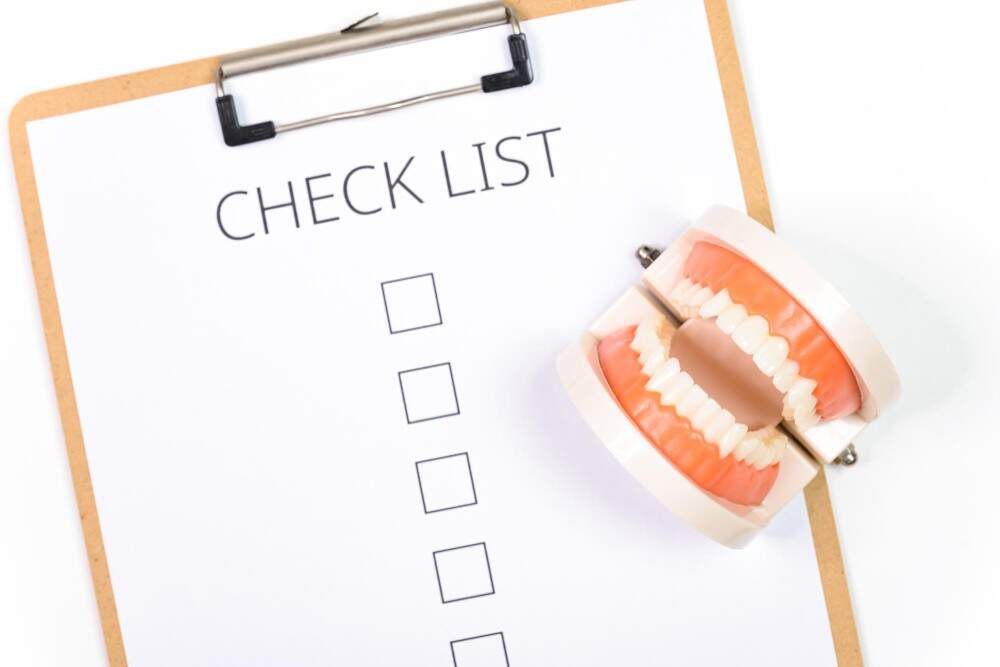Clinicians who want to give patients aesthetically pleasing dental restorations frequently use zirconia crowns in Albania. Because of their additional reliability, longevity, and beauty, these crowns are preferred over traditional PFMs (porcelain fused to metal) or complete gold crowns.
Most dentists prefer zirconia to all-ceramic restorations when fixing a missing tooth. For the optimum outcomes, zirconia crowns must have shoulder or chamfer edges. They can be made of full-contour solid zirconia, layered zirconia, or zirconia HT. Screw-retained zirconia and multilayer zirconia can be fused or screw-retained.
Several dental professionals in Albania are shifting away from traditional PFM crowns and toward the utilization of zirconia for permanent tooth restorations. Zirconia restorations are quickly becoming the most common material for creating dental restorations due to their outstanding appearance and because they are almost unbreakable.
Solid or layered zirconia?
Because solid zirconia, also known as “monolithic zirconia,” is translucent, it is typically used for back crowns. Solid zirconia comprises higher modifiers than high-transparency zirconia, making it more resistant to chewing and swallowing forces. This substance is especially suited to those who grind their teeth.
This method of restoration requires just the minimum clearance and causes less damage to the adjacent teeth. Solid zirconia is also excellent for concealing excessively stained dental preps, particularly those that have discolored as a result of earlier dental treatments, such as a post and core or an implant-supported restoration.
Layered zirconia is more transparent and opaque than solid zirconia, yet it is notably excellent for anterior crowns. While layered zirconia is typically utilized for front crowns, it is also suitable for back crowns, provided there is enough clearance.
The best aesthetically pleasing outcomes can be obtained, when the procedure is done correctly. Solid and layered zirconia crowns have the sturdiness and uniformity of typical PFM restorations while providing considerably improved looks.
Zirconia HT
At 590–720 MegaPascal, zirconia HT (highly translucent) is sturdier than porcelain-fused-to-metal (PFM) restorations while retaining a genuine and bright coloration.
The product is exclusively metal-free; therefore, it avoids gingival discoloration and eliminates the risk of revealing metallic borders if gingival regression occurs. They are inherently aesthetically pleasing, reflect the color of neighboring teeth, and may be tailored to any tint, making great zirconia acceptable for bridges up to three units in width.
Because there is no requirement for shading liquids or drying time, using Zirconia HT can save your clients well over three hours. Restoration work will indeed appear realistic due to their intrinsic natural brightness in any illumination condition, whether sunlight, moonlight, or black light. There is no need for a one-of-a-kind luminous coating.
The Benefits of Choosing Zirconia Crowns
Strength and durability have been improved
Among the most difficult challenges in the dental sector is ensuring that restoration operations use biocompatible materials that can really withstand the pressure that is exerted by biting forces. Zirconia outperforms porcelain in terms of capability, with up to five times the resilience of porcelain and many other types of crowns.
As a result, zirconia is an excellent alternative for dental patients who have a history of broken, shattered, or otherwise damaged crowns made of other materials.
Patients who chew their fingernails or grit their teeth, either deliberately or unconsciously, may realize that their crowns are less stable. Zirconia can withstand these stresses better, which indicates that these prostheses will require less rebuilding in the long term.
Improved stain resistance
Zirconia crowns are substantially more stain-resistant than composite ceramic or acrylic crowns. This is significant for dental patients who value a genuine smile. It is stain-resistant to caffeine, wine, alcohol, and smoking.
The shade of the crown may need to be adjusted over time when the real teeth undergo changes due to discoloration or aging, or if they are repainted a much lighter color.
Authentic tooth preservation
Different kinds of crowns that are fitted atop real teeth to provide safety may necessitate the removal of a significant portion of the tooth in an attempt to achieve the optimal fit.
Adjacent, healthy teeth around the capped tooth might also need to be prepared prior to the crown being fitted. Zirconia crowns involve less tooth removal than traditional crowns.
This implies that naturally healthy teeth are more likely to be preserved, which could go a long way towards guaranteeing general dental health. The protection of natural teeth is frequently the focus of the dental professional.
Hypoallergenic Characteristics
Because zirconia is so compatible with the human body, it is used for a variety of medicinal purposes. There is a significantly lower probability of a patient developing an adverse response to zirconia, which will also aid to prevent the risk of refusal.
Some people are allergic to specific metals and minerals. Infections or refusal can cause discomfort, inflammation, and further tooth or jawbone loss. Zirconia crowns are metal-free and have a biocompatible structure that may be tolerated by the most sensitive individuals.
Appearance that is genuine
Whereas the hue and specular reflection of zirconia give it a considerably more natural look and allow it to blend in well enough with real teeth, it’s not always a valid option for use on teeth that will be visible.
If it isn’t covered with porcelain to give it a smoother surface that matches perfectly with the front teeth, it may be best adapted for teeth farther back in the mouth. Patients will notice the boosted look every time they grin broadly.
Temperature Tolerance
The capacity to withstand both warm and cold temperatures can help safeguard against sensitivity, which is common with other crowns.
Zirconia crowns have minimal heat conduction and therefore do not convey excessive temperature differences like other crowns. This implies there is less chance of pain in the patient’s mouth while consuming ice cream or drinking a warm drink.
More secure for your patients
Patients who are sensitive to PFM restorations will not experience an allergic response because of zirconia’s high biocompatibility. Many patients are hypersensitive to the materials utilized in the fabrication of PFM crowns.
If you are treating a client who suffers from these allergies, zirconia should be utilized while performing restorations. Zirconia has great biocompatibility, making zirconia crowns and bridges extremely suitable for therapeutic use.
Easily Modifiable
If the color of the zirconia needs to be changed, it is simple to adjust and contour. It may also be recolored to reflect the color of the current tooth structure. This again implies that the dental customer can have great satisfaction and biting compatibility.
Fast Comeback
Zirconia crowns can be created and flipped over considerably more quickly than other materials, considering that they are made from premade pieces. Albanian clinics can prepare and distribute crowns after receiving your medication, measurements, and needs, so customers are not stuck with interim crowns for a prolonged period of time.
The Ideal Fit
Albanian dentistry facilities mill zirconia crowns, implementing advanced scans and specifications provided by dentists to ensure a precise fit for the customer.
This not only ensures the patient’s safety, but it also ensures that the patient isn’t kept waiting for months while changes are made. Digital scans are quick and produce the long-lasting and effective crowns that customers expect.
Are there any drawbacks to wearing a zirconia crown?
The drawbacks of zirconia crowns are quite minor. It is true that the material has created some worries concerning the friction against the tooth root and the wearing down of the adjacent teeth. Nevertheless, regular check-ups at the dentist help limit the risk of injuring the opposite teeth.
Traditionally, solely bone-white subsets could be made for zirconia crowns, which occasionally made producing a visually pleasing look difficult.
The contemporary materials, on the other hand, are pre-shaded and have the ability to create extremely attractive and organic restorations with little tooth reduction, satisfying or perhaps even surpassing patient aspirations for efficiency in the process!
The demand for zirconia vastly outnumbers the desire for PFMs, and all these “ancient” restorations are now becoming obsolete.
What is the expected lifespan of a zirconia crown?
When properly cared for, the majority of dental crowns endure approximately five to fifteen years. Their lifespan will be determined by your oral cleanliness as well as other lifestyle choices.
For instance, if you are grinding your teeth while sleeping, you may necessitate a replacement sooner compared to someone who is not. Additional activities that will shorten the life of your zirconia crown entail:
- Ice chewing
- Using your teeth to open packages
- Nails biting
- Poor oral hygiene
Keep a healthy smile
Restorative dental treatment material innovation enables significantly more effective treatments with longer-lasting outcomes. If it is used correctly, a zirconia crown can dramatically enhance your general oral health. Such typical dentistry aspects will maintain your teeth in good condition and help you feel more comfortable throughout the process.
How Can You Maintain Good Oral Hygiene While Wearing a Zirconia Crown?
Whichever material you choose for your crown, practice excellent oral hygiene as you would with your other teeth.
Brushing at least two times a day, flossing or cleaning around your teeth at least every day with interdental toothbrushes or water flossers, and considering utilizing other beneficial items such as antibacterial mouthwashes and tongue scrubbers.
Make an appointment with your dentist for frequent deep cleaning, not simply to maintain your teeth gleaming white and free of bacteria, but rather to evaluate the condition of your crown.
Should you have a tooth that is worn down, broken, or cracked and are unsure whether zirconia is the proper material for your crown, consult with your dentist.
With this fresh information, you should be able to have an intelligent dialogue with your dental professional about your individual needs, such as the position of tooth in your mouth, the functionality of that tooth, the price, and the look you desire. Next, jointly, you may choose a crown material that will offer you a huge, beaming smile.
Which is better, a zirconia or an E-max crown?
E-max and zirconium crowns can each be used to repair damaged or cracked teeth, badly decayed teeth, missing teeth, stained teeth, or misaligned teeth. Both alloys are capable of successfully replacing previous PFM crowns with visible steel lines.
The only noticeable distinction between the two is that E-Max is much more transparent. Clients who are looking to replace their frontal teeth to repair their looks may pick E-max due to its permeability.
There is a widespread misperception that zirconium crowns are superior to E-max crowns for rear teeth. Despite their transparency, E-max crowns can be sculpted to be strong enough to replace back molars.
The use of E-max or zirconia crowns is also determined by the number of crowns required. Despite the fact that both are well-suited to replacing a missing tooth, multiple employment in dental bridges or for side-by-side teeth requires careful dental planning. You could perhaps wish to think about the qualities of zirconium crowns made of porcelain.
The choice between E-max and zirconium is tricky. Both provide high-quality outcomes for enduring dental crowns. As previously stated, E-max is more opaque than zirconium, which is the sole discernible distinction between the two elements. Contact your dentist to determine the appropriate material for your dental crown procedure.




